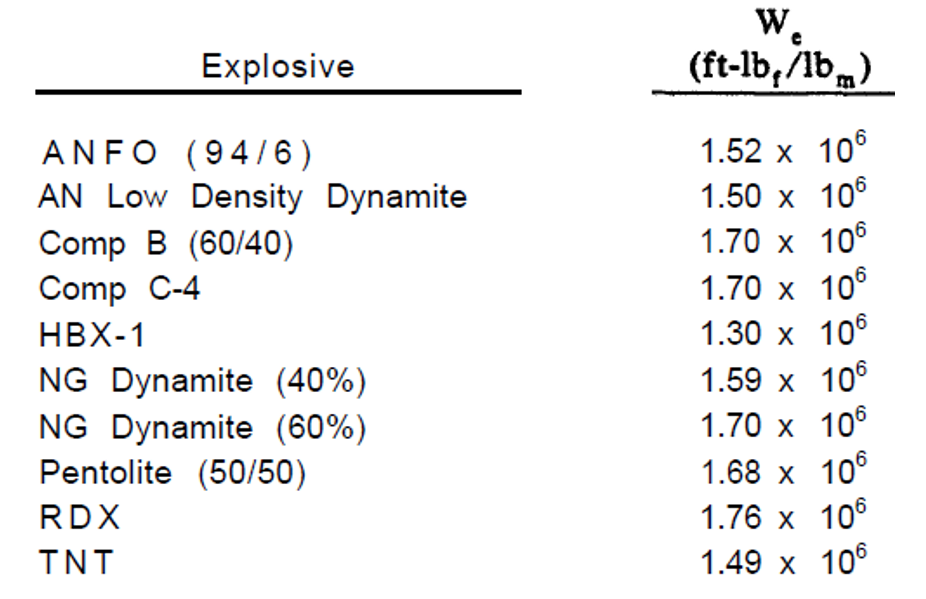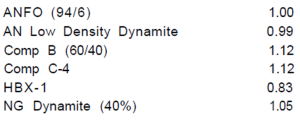Most chemical explosives have close to the same energy release per unit weight (We).
If the explosive being used in a blasting situation is not known, the prediction equations can be used substituting a “typical” value for (We).
Average energy release values for several commercial explosives are shown in the table 1 below.

The quantity n is a measure of the relative energy ratio among the explosives. Using the energy release of ANFO (94/6) as the base, all explosive energies are normalized to determine the value of n.
N = 1.0 for ANFO
Thus, ‘for ANFO (94/6), n equals 1.00. Those explosives more energetic have a value of n greater than 1.00 and those less energetic have a value of n less than 1.00.
A list of equivalent energy release ratios is shown in table 2 below. It should be noted that Dyno Nobel is the primary manufacturer of most explosives in the Western World countries including older names brands that still may exist today. The Chinese make up the remainder for Eastern World countries.

Using a Dyno Nobel Unimax Specification Sheet as shown below, the following Relative Weight Strength can be used to simulate (n) where the above values are not shown.

